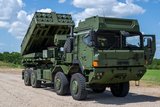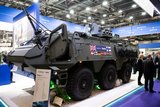US Army will adapt USN missiles to plug capability gap
The US Army is repurposing marquee elements of the USN strike inventory in order to expedite efforts to field a prototype Mid-Range Capability (MRC) battery by 2023, by tapping Lockheed Martin to integrate the Tomahawk cruise missile and Standard Missile-6 into a new ground-launch system.
Under an Other Transaction Agreement with the US Army, worth $339 million and announced on 6 November, Lockheed Martin Rotary and Mission Systems will integrate the Raytheon-made missiles, plus a launcher and C2 system, into an MRC Block I prototype.
‘Adapting existing systems as much as possible will allow us to move faster than traditional
Already have an account? Log in
Want to keep reading this article?
More from Land Warfare
-
![Lithuanian 1st Division to achieve initial operating capability in 2026]()
Lithuanian 1st Division to achieve initial operating capability in 2026
Lithuania is one of the countries stepping up its defences in the face of the war in Ukraine with a particular focus on its neighbour and Russian ally Belarus, which has been making incursions into Lithuania’s airspace with balloons and drones.
-
Medium knocked out of British Army LMP, with CAVS as heavyweight champion
As the British Army seeks to modernise and consolidate its diverse vehicle fleet, yet another change in direction is underway.
-
![Energy evolution: How laser defence systems are powering the next phase of air defence (podcast)]()
Energy evolution: How laser defence systems are powering the next phase of air defence (podcast)
Laser-based air defence is moving from promise to deployment as global threats evolve. In this special podcast, we explore how high-energy laser systems are reshaping interception strategies.
























